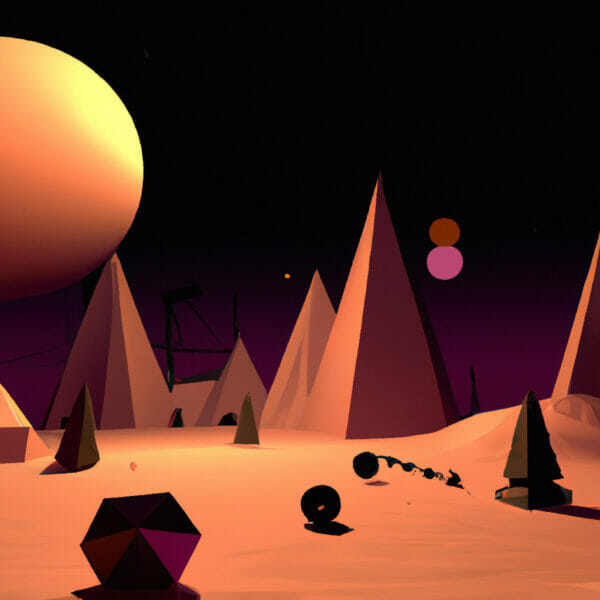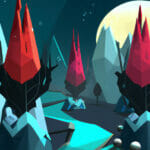Welcome to this tutorial on Roblox functions! Here, you’ll dive into the fascinating world of coding in Roblox, learning how to construct and utilize functions within your game development projects.
Indeed, mastering Roblox functions is a stepping stone for becoming a seasoned game developer. But, before we delve into the coding tutorials, let’s establish some conceptual groundwork.
Table of contents
What are Roblox functions?
Functions in Roblox, much like functions in any other programming language, are blocks of reusable code designed to accomplish a specific task.
Understand it as a custom-made tool that you craft once but can use multiple times, enhancing the game’s efficiency.
Why are Roblox functions important?
Learning Roblox functions is like equipping yourself with a magic wand, allowing you to perform complex tasks with a flick! They contribute to cleaner, more readable, and highly maintainable code.
Whether you’re a beginner embarking on your coding journey or a seasoned developer enhancing your skillset, mastering Roblox functions paves your way to creating more complex and engaging games.
Basic Function Structure
Before we delve into more complex examples, let’s first take a look at how a basic Roblox function is structured.
function printHelloWorld()
print("Hello, World!")
endThe function above is named printHelloWorld and its task is to print “Hello, World!”. You can then call this function in the code anytime by its name, like this:
printHelloWorld()
Functions with Parameters
Roblox functions can also utilize parameters to make the function more flexible.
function greetPlayer(name)
print("Welcome, " .. name .. "!")
endThe function above takes one parameter (name), and then uses it to print a custom welcoming message. You can call this function with any argument replacing “name”, like so:
greetPlayer("Zenva")Returning Data from Functions
Functions can also return data allowing it to be used later in the code. Here is an example:
function addNumbers(num1, num2) local sum = num1 + num2 return sum end
This function takes two parameters (num1, num2), and returns their sum. You can use it in your code like this:
local result = addNumbers(3, 5) print(result) -- prints 8
Functions within Tables
In Roblox, it’s common to see functions being used within tables. Here is an example:
local myTable = {
printHello = function()
print("Hello!")
end
}
myTable.printHello() -- prints “Hello!”The above code declares a table called “myTable” and assigns a function named “printHello” to it. That function is then called using myTable.printHello().
More Complex Function Examples
While so far we’ve dealt with straightforward function examples for simplicity, functions in actual games can be far more complex. Let’s delve into more advanced usage scenarios.
Nesting Functions
Functions can be nested within other functions, meaning you can call one function from within another.
function parentFunction()
print("This is the parent function.")
function nestedFunction()
print("This is a nested function.")
end
nestedFunction() -- call the nested function
end
parentFunction() -- call the parent functionThe “parentFunction” function contains another function “nestedFunction”, which is called inside the parentFunction. This nested function only exists within the scope of the parent function.
Recursive Functions
A recursive function is a function that calls itself. Here’s a simple example of a recursive function that counts down from a certain number:
function countdown(num)
if num <= 0 then
print("Blast off!")
else
print(num .. "...")
countdown(num - 1)
end
end
countdown(5)This function prints the countdown until it gets to zero, where it then prints “Blast off!”.
Array of Functions
Roblox allows you to create an array (or table) of functions. Take a look at the example:
local functionOne = function()
print("This is function one.")
end
local functionTwo = function()
print("This is function two.")
end
local arrayOfFunctions = {functionOne, functionTwo}
for i=1, #arrayOfFunctions do
arrayOfFunctions[i]()
endThis code will loop through the arrayOfFunctions and call each function within it.
Understanding and executing functions in Roblox with clarity and precision will significantly elevate your game developing skills. With these in your arsenal, you’re well on your way to creating even more enthralling gaming experiences.
Here at Zenva, we’re all about empowering you to transform your dream games into reality. Master more robust concepts and practices related to Roblox development or delve into the world of other game engines, by exploring our extensive course offerings. Happy coding!
Passing Functions as Parameters
In Roblox, you can also pass functions as parameters to other functions. This allows you to execute different code based on the function that’s passed. Consider the following example:
function executeFunction(aFunction)
aFunction()
end
function sayHello()
print("Hello!")
end
executeFunction(sayHello)This code creates one function “executeFunction” that takes another function as a parameter and calls it. The “sayHello” function is then passed as a parameter to the “executeFunction”.
Roblox Lua: Object-Oriented Programming (OOP)
Functions play a big role in object-oriented programming (OOP). A class in Roblox is a blueprint for creating objects (a particular data structure), providing initial values for state (member variables) and implementations of behavior (member functions).
MyClass = {}
MyClass.__index = MyClass
function MyClass.new(id)
local self = setmetatable({}, MyClass)
self.id = id
return self
end
function MyClass:printId()
print("ID: " .. self.id)
endIn the example above, a class named “MyClass” is created with a “new” function to initialize any new instance of the class (create objects of it) and a “printId” function that prints the id of the instance.
Creating an instance and invoking the function would look like this:
local myInstance = MyClass.new(1) myInstance:printId() -- prints "ID: 1"
Using Roblox Service Functions
Learning how to utilize functions is an integral part of leveraging the Roblox platform. For example, you’ll encounter many built-in functions in various Roblox services, such as the Workspace.
workspace.Gravity = 0
The above example illustrates how to manipulate the Gravity property using the built-in Workspace service to set the gravity of a game to zero.
Using Functions with the Roblox Toolkit
Functions also play a substantial role in executing Roblox Toolkit. Numerous built-in functions interact with models, parts, and a myriad of other game elements.
-- Clone a Part
local clonedPart = part:Clone()
-- Destroy a Part
part:Destroy()
-- Create a model and add a part to it
local model = Instance.new("Model")
local part = Instance.new("Part")
part.Parent = model
-- Use wait function to pause
wait(2)The first pair of examples clones and then destroys a part, while the next creates a Model and adds a Part to it. The final example calls the built-in “wait” function to pause the script for 2 seconds before proceeding.
In conclusion, functions in Roblox are incredibly powerful tools that, once mastered, make a notable difference in your game development projects. Here at Zenva, it’s our mission to provide enlightening and efficient tutorials to guide you on your developer journey, and we hope this guide aids in cementing your understanding of Roblox functions. Let the coding begin!
Well done! You’ve made an excellent stride into the captivating universe of Roblox functions and their essential role in game development. But remember, the journey of mastery isn’t a sprint; it’s a marathon. So, where do you go next with this newfound knowledge?
We encourage you to take these skills to the next level by embarking on the Roblox Game Development Mini-Degree offered by Zenva Academy. This comprehensive collection of courses provides a deep dive into game creation using Roblox Studio and Lua across various game genres. Available at any time, these project-based courses are designed to cater to your schedule and learning pace and are supplemented by coding challenges to reinforce your learning.
Besides, we recommend exploring our broader Roblox course collection on Zenva Academy. With over 250 supported courses going from beginner to professional, there’s always more to learn, more games to create, and even more opportunities to grab in the multi-billion-dollar game market. So, keep learning, keep creating, and continue your exciting journey with Zenva!
Conclusion
Starting simple, diving deep, and continually practising is the road to mastering functions in Roblox game development. The knowledge of using functions efficiently can indeed make game coding an exciting and less complicated experience.
We invite you to continue this exciting learning journey with Zenva Academy. Embark on the Roblox Game Development Mini-Degree, and empower yourself with advanced Roblox development skills that bring your game ideas to life in an even better and engaging manner. We are here to foster your learning process, turning your creative vision into reality one line of code at a time.
Did you come across any errors in this tutorial? Please let us know by completing this form and we’ll look into it!

FINAL DAYS: Unlock coding courses in Unity, Godot, Unreal, Python and more.







